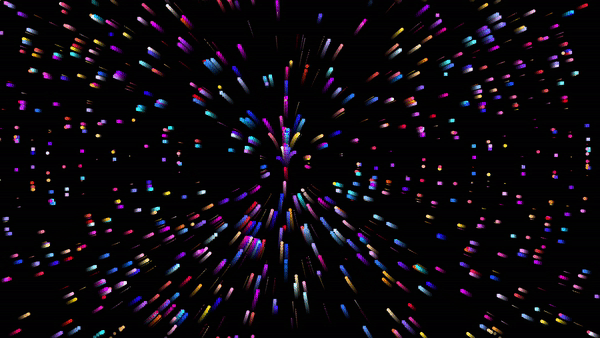My Research
I favor these projects not because they’re already interactive enough, but because they have a huge potential. You can enrich the interactive experience by adding more variables to them.In another word, they’re not just motivations, but row materials themselves.
1. RGB Large Digital Clock © MIT
Not your typical wall clock that tells time, it also becomes your wall light panels that lit up your scifi-like bedroom.
This is an interactive device with simple functions but multiple fun. It can serve as a clock, and it’s also an illumination device with dynamic light effects. This is significant as a contribution to interactivity, because the LED strips used here have unlimited possibility. It may not seem so interactive in this program since the color changes randomly, but if more codes ad sensors are added, it may show specific patterns or a group of patterns with specific characters based on certain situations. Therefore, this is a project with good augmentability.

2. Visualization with Arduino and Processing
Link: https://www.arduino.cc/education/visualization-with-arduino-and-processing
This is a project that can visualize the results collected by sensors attached to Arduino on a processing drawing board. The sensors can be adjusted based on the variables you want to use, such as environment brightness ,sound, pressure or something else. I may refer to this project to design an interactive drawing board where users paint with multiple factors. If it was me, I would design a physical pad where users can place and slide their hands or fingers on it to create pictures. Different variables may control different factors respectively. The pressure given to the pad may control brightness, and whether it’s a left one or right one may control color. For example, left for R, right for B and G as random.


My understanding of Interactive Experience
From my perspective, mutual communication is irreplaceable for sure, and it can’t be better if the program and the users can perform rounds of interactions in different forms and levels, which makes the experience more like a loop or a circle instead of a one-lane road. The experience should go further gradually, where users dig out more and more fun facts beyond their expectations during the interaction.
Meanwhile, we should try to find a balance, where the interactive project itself and the users form a more equal relationship. You cannot make the project itself do almost all and the users just push some simple buttons. It’s also intolerant if the users have to perform complex operations to simply change a few variables. The former one is too “hard-working” and the latter one is too “lazy”, both of which doesn’t make the experience joyful. You have to insert a moderate number of interaction because this can best raise the users’ interest while not bothering them too much. The designers created the original project, and the users can be construed as the secondary creators. Their creations should also be thoroughly considered, planned and respected since they make a contribution to the project too.
Another significant factor of interactive experience, I suppose, is that the users should learn something new, instead of finishing having fun and then having nothing more left in their brains. A good interactive experience should also be an educative experience. The users should learn knowledges directly, like physical or electronic principles, or indirectly, like what contributes to life and happiness. If an interactive project succeed in influencing the users and change them for better, that is truly interactive, where it conveys something that matters to the users, even after the experience has ended. Such an experience is more solid, meaningful and worth an aftertaste.